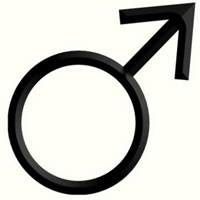Professional roles of female urologists: A webinar-based survey of perceptions and obstacles to career development

Accepted: October 26, 2021
All claims expressed in this article are solely those of the authors and do not necessarily represent those of their affiliated organizations, or those of the publisher, the editors and the reviewers. Any product that may be evaluated in this article or claim that may be made by its manufacturer is not guaranteed or endorsed by the publisher.
Background: Urology, traditionally a maledominated specialty, keeping pace with the quickly changing gender landscape, has been characterized by waves of feminization. This study aims to understand the perspectives of women urologists on the obstacles to their career development, and the impact of such hurdles on their professional roles in urological education, practice, and leadership.
Methods: 119 female urology residents/consultants were surveyed via a webinar-based platform, covering relevant questions on domains of Academia, Mentorship, Leadership, Parenting, and Charity. Statistical analysis was done using frequency distribution based on the responses.
Results: 46.8% of the respondents felt that there is an under-representation of women in academia. ‘Having a good mentor’ was the most important factor for a novice to succeed in academia (68%). The most important trait in becoming a good leader was ‘good communication skills’ (35%), followed by ‘visionary’ (20%). The greatest challenge faced by leaders in the medical field was considered as ‘time management’ (31.9%). Only 21.2% of the participants felt difficulty in having a work-personal life balance, whereas 63.8% of them found it difficult only ‘sometimes’. As a working parent, ‘the guilt that they are not available all the time’ was considered the most difficult aspect (59.5%), and ‘more flexible schedule’ was needed to make their lives as a working parent easier (46.8%). 34% of the respondents were affiliated with some charitable organizations. The biggest drive to do charity was their satisfaction with a noble cause (72.3%).
Conclusions: Need for increased encouragement and recruitment of females into urology, and to support and nurture them in their career aspirations.
Rickey LM, Yang CC, Lamb DJ. Women in urology 2014. Urol Pract. 2014; 1:104-6. DOI: https://doi.org/10.1016/j.urpr.2014.04.004
Amir H, Beri A, Yechiely R, et al. Do urology male patients prefer same-gender urologist? Am J Mens Health 2018; 12:1379-83. DOI: https://doi.org/10.1177/1557988316650886
Oberlin DT, Vo AX, Bachrach L, Flury SC. The gender divide: the impact of surgeon gender on surgical practice patterns in urology. J Urol. 2016; 196:1522-6. DOI: https://doi.org/10.1016/j.juro.2016.05.030
Hirayama M, Fernando S. Organisational barriers to and facilitators for female surgeons’ career progression: a systematic review. J R Soc Med. 2018; 111:324-34. DOI: https://doi.org/10.1177/0141076818790661
Seemann NM, Webster F, Holden HA, et al. Women in academic surgery: Why is the playing field still not level? Am J Surg. 2016;211:343-9. DOI: https://doi.org/10.1016/j.amjsurg.2015.08.036
Capella C, Schlegel L, Shenot P, Murphy A. Female representation at high-profile urology conferences, 2014-2019: a leadership metric. Urology. 2021; 150:72-76. DOI: https://doi.org/10.1016/j.urology.2020.05.049
Carr PL, Gunn CM, Kaplan SA, et al. Inadequate progress for women in academic medicine: findings from the National Faculty study. J Womens Health (Larchmt). 2015; 24:190-9. DOI: https://doi.org/10.1089/jwh.2014.4848
Nettey OS, Fuchs JS, Kielb SJ, Schaeffer EM. Gender Representation in Urologic Subspecialties. Urology. 2018; 114:66-70. DOI: https://doi.org/10.1016/j.urology.2017.12.034
Dai JC, Agochukwu-Mmonu N, Hittelman AB. Strategies forattracting women and underrepresented minorities in Urology. Curr Urol Rep. 2019; 20:61. DOI: https://doi.org/10.1007/s11934-019-0921-5
Kotsis SV, Chung KC. Application of the "see one, do one, teach one" concept in surgical training. Plast Reconstr Surg. 2013; 131:1194-1201. DOI: https://doi.org/10.1097/PRS.0b013e318287a0b3
Eby LT, Allen TD, Evans SC, et al. Does mentoring matter? A multidisciplinary meta-analysis comparing mentored and non-mentored individuals. J Vocat Behav. 2008; 72:254-267. DOI: https://doi.org/10.1016/j.jvb.2007.04.005
Vender RJ. Leadership: an overview. Am J Gastroenterol. 2015;110:362-7. DOI: https://doi.org/10.1038/ajg.2014.199
Chan Z, Bruxer A, Lee J, et al. What makes a leader: Identifying the strengths of Canadian physical therapists. Physiother Canada. 2015; 67:341-8. DOI: https://doi.org/10.3138/ptc.2014-48
de Vries RE, Bakker-Pieper A, Oostenveld W. Leadership = communication? The relations of leaders’ communication styles with leadership styles, knowledge sharing and leadership outcomes. J Bus Psychol. 2010; 25:367-80. DOI: https://doi.org/10.1007/s10869-009-9140-2
Berghout MA, Fabbricotti IN, Buljac-Samardžic M, Hilders CGJM. Medical leaders or masters? - A systematic review of medical leadership in hospital settings. PLoS One. 2017; 12:e0184522. DOI: https://doi.org/10.1371/journal.pone.0184522
Kumar S, Adhish VS, Chauhan A. Managing self for leadership. Indian J Community Med. 2014; 39:138-42. DOI: https://doi.org/10.4103/0970-0218.137148
Zhang X, Qian J, Wang B, et al. Leaders’ behaviors matter: The role of delegation in promoting employees’ feedback-seeking behavior. Front Psychol. 2017; 8:920. DOI: https://doi.org/10.3389/fpsyg.2017.00920
Dyrbye LN, Freischlag J, Kaups KL, et al. Work-home conflicts have a substantial impact on career decisions that affect the adequacy of the surgical workforce. Arch Surg. 2012; 147:933-9. DOI: https://doi.org/10.1001/archsurg.2012.835
Medscape National Physician Burnout & Suicide Report 2020: The Generational Divide (Internet). (cited 2020 Sep 11). Available from: https://www.medscape.com/slideshow/2020-lifestyle-burnout-6012460#1
Parsons WL, Duke PS, Snow P, Edwards A. Physicians as parents: Parenting experiences of physicians in Newfoundland and Labrador. Can Fam Physician. 2009; 55:808
PAGEPress has chosen to apply the Creative Commons Attribution NonCommercial 4.0 International License (CC BY-NC 4.0) to all manuscripts to be published.


 https://doi.org/10.4081/aiua.2021.4.455
https://doi.org/10.4081/aiua.2021.4.455



